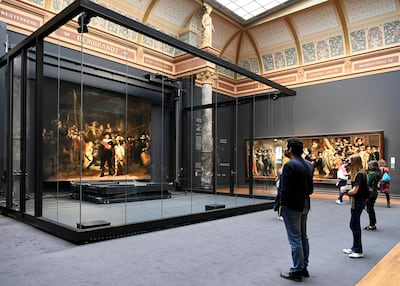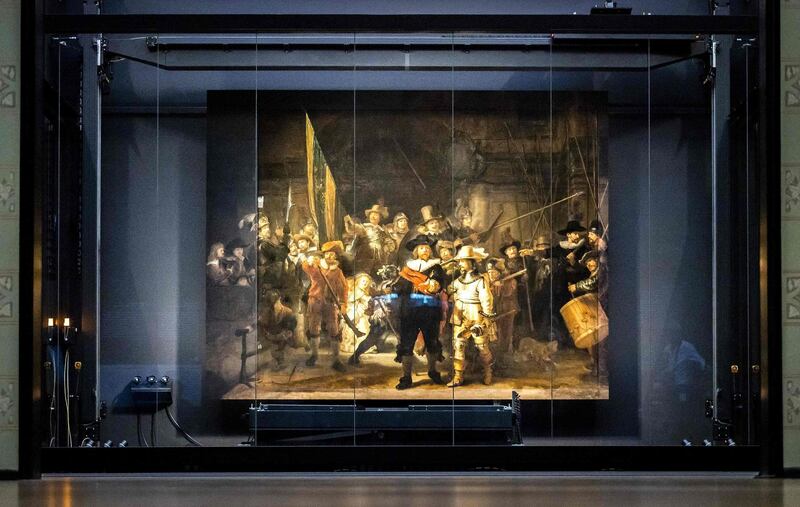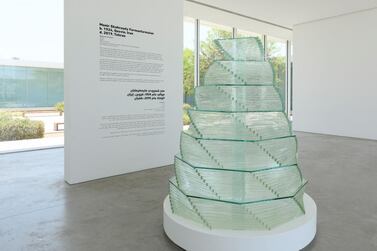Rembrandt's The Night Watch has been incomplete for 300 years. But now, thanks to artificial intelligence (AI), the 1642 painting can be imagined in its full again.
On display at Amsterdam's Rijksmuseum, the work by the Dutch painter is colossal – measuring almost 12 by 14 feet, or 363 centimetres by 437cm. It was cut at the sides in 1715 in order for it to be passed through the doors of Amsterdam's city hall.
About 60cm of the canvas was trimmed on the left side, 7cm from the right, 22cm from the top and 12cm from the bottom, according to The Guardian.
Using high-resolution photography of the original work, the AI was able to recreate the missing parts in Rembrandt’s style. From the photograph, algorithms were able to study and correct the perspective of the painting, recognise the right colours to utilise for the various elements and to copy the brushstrokes of the Dutch master.

The resulting images were then printed on canvas and attached next to the painting at the museum, giving a new display for visitors that puts new and old technology side by side.
A key work from the Dutch Golden Age, the painting was commissioned by Captain Banninck Cocq and members of his civic militia guard.
The military portrait is admired for the artist’s dramatic contrasts between light and shadow, and the way he highlights certain characters according to the light. With his technique, Rembrandt was also able to bring dynamism to the painting, giving it a feel of movement.
With the added parts by AI, the painting now includes more figures – two militiamen and a boy. It also shifts the centre of the painting, revealing an empty space on the left side of the painting, as if to suggest that the subjects were marching forward towards that direction.
The AI additions will now be on view at the Rijksmuseum for three months.







